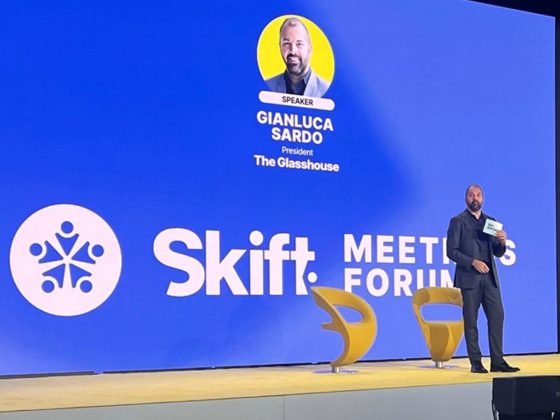Organizational culture is the heartbeat of any company. It shapes how employees interact, make decisions, and work toward shared goals. For leaders, fostering a strong and positive culture is not just about driving performance—it’s about creating an environment where people feel valued, motivated, and aligned with the organization’s mission. This article explores the critical role leaders play in shaping organizational culture and provides actionable strategies for building a culture that supports both individual and organizational success.
What Is Organizational Culture?
Organizational culture encompasses the values, beliefs, and behaviors that define how work gets done. It’s the unwritten code that influences everything from decision-making to employee engagement.
Strong cultures are characterized by:
- Shared Purpose: A clear mission that unites employees.
- Collaboration: Open communication and teamwork across all levels.
- Innovation: A willingness to experiment and embrace change.
- Respect: A commitment to fairness, inclusivity, and trust.
Leaders set the tone for these cultural elements through their actions, decisions, and communication. As the saying goes, “Culture is shaped at the top.”
The Leader’s Influence on Culture
Leadership behaviors are the most powerful drivers of culture. Employees look to leaders for cues on acceptable behaviors and priorities. A leader who models integrity, collaboration, and innovation reinforces those values within the organization.
For example, Herb Kelleher, the co-founder of Southwest Airlines, emphasized a culture of fun and employee care. His leadership inspired a workplace where employees felt empowered and engaged, leading to exceptional customer experiences and business success.
Leaders also influence culture through:
- Hiring Practices: Ensuring new hires align with organizational values.
- Recognition Programs: Celebrating behaviors that exemplify the desired culture.
- Policies and Processes: Embedding cultural values into day-to-day operations.
Strategies for Building a Strong Culture
- Define and Communicate Core Values
Culture starts with a clear set of values. Leaders must:- Articulate Values: Define what the organization stands for and how it operates.
- Live the Values: Demonstrate alignment with these principles in everyday decisions.
- Reinforce the Message: Use team meetings, newsletters, and other platforms to remind employees of the organization’s mission and values.
- Foster Open Communication
Transparency and dialogue are essential for building trust and collaboration. Leaders can foster open communication by:- Encouraging Feedback: Create channels for employees to voice ideas and concerns.
- Listening Actively: Show genuine interest in employee perspectives.
- Being Transparent: Share organizational challenges and successes honestly.
- Empower Employees
A strong culture thrives on empowered employees who feel ownership of their work. Leaders can foster empowerment by:- Delegating meaningful responsibilities.
- Supporting professional development through training and mentorship.
- Encouraging autonomy in decision-making.
- Celebrate Successes
Recognition reinforces the behaviors and values leaders want to see. Effective recognition programs:- Highlight individual and team achievements.
- Align rewards with cultural values (e.g., collaboration, innovation).
- Foster a sense of pride and community.
- Lead with Empathy
Empathy is the cornerstone of a people-centered culture. Leaders who prioritize well-being and inclusivity create environments where employees feel supported and valued. Empathetic leadership involves:- Understanding employee challenges and offering support.
- Being flexible with policies to accommodate diverse needs.
- Building genuine relationships based on trust and respect.
Navigating Challenges in Cultural Transformation
Building or transforming culture is not without obstacles. Common challenges include:
- Resistance to Change: Employees may be hesitant to embrace new cultural norms.
- Misalignment Among Leaders: Inconsistencies in leadership behavior can undermine cultural initiatives.
- Rapid Growth or Change: Scaling or pivoting can dilute cultural cohesion.
To overcome these challenges, leaders must:
- Engage employees early and often in the process of cultural transformation.
- Ensure alignment among senior leaders to model desired behaviors consistently.
- Regularly assess and refine cultural initiatives to adapt to changing circumstances.
Case Study: Microsoft’s Cultural Shift Under Satya Nadella
When Satya Nadella became CEO of Microsoft in 2014, he inherited a company known for internal competition and siloed teams. Nadella focused on fostering a culture of collaboration, empathy, and innovation.
Key initiatives included:
- Encouraging a “growth mindset” to promote continuous learning and experimentation.
- Breaking down silos to enhance cross-functional teamwork.
- Leading with humility and openness, modeling the behaviors he wanted to see.
This cultural transformation not only revitalized employee engagement but also positioned Microsoft as a leader in cloud computing and AI.
The Long-Term Impact of Strong Culture
A well-defined and nurtured culture delivers significant benefits, including:
- Higher Employee Engagement: Motivated employees are more productive and less likely to leave.
- Better Customer Experiences: A positive internal culture translates to better service and satisfaction.
- Sustainable Growth: Organizations with strong cultures adapt more effectively to change and innovation.
Conversely, a toxic culture can lead to high turnover, reputational damage, and financial losses, as seen in high-profile cases like Uber’s cultural controversies in its early years.
The leader’s role in shaping organizational culture is both a responsibility and an opportunity. By modeling values, fostering communication, and empowering employees, leaders create a culture that drives engagement, innovation, and success.
In today’s competitive landscape, a strong culture is not just a differentiator—it’s a strategic advantage. For leaders, the path to building such a culture begins with intentionality, empathy, and a commitment to aligning actions with values.
Image Source: Unsplash.com









